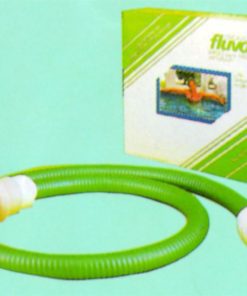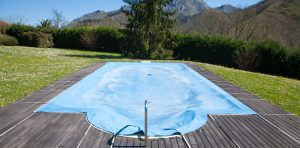Spa Pool Safety: Understanding the Hidden Risks
Are you a spa pool or hot tub enthusiast? These warm, bubbly havens offer relaxation and a chance to unwind, but they also present some potential health risks if not properly managed. It’s crucial to understand that spa pools can become breeding grounds for harmful bacteria if precautions aren’t taken. According to the Health and Safety Executive (HSE), spa-pool systems are a recognised source of diseases caused by infectious agents, most notably
Legionella pneumophila, the bacteria that causes Legionnaires’ disease [1, 2].
What makes spa pools so risky? The warm, agitated water, often between 30–40 °C, is an ideal environment for microbial growth. The high bather-to-water ratio also contributes to a higher concentration of organic material such as sweat, skin, and hair, providing nutrients for bacteria [3, 4]. Air jets and similar devices create aerosols—tiny water droplets that can be inhaled— potentially carrying these harmful microorganisms [3, 5]. It is vital to know the dangers so that you can effectively manage them.
Understanding the Key Risks
- Legionnaires’ Disease: This severe form of pneumonia is caused by inhaling legionella bacteria [6]. Outbreaks have been linked to poorly maintained spa pools in various settings, including leisure centers, hotels, and cruise ships [1, 2, 4].
- Pseudomonas aeruginosa: This bacterium can cause folliculitis, a skin infection characterized by a red, itchy rash [6-8]. It is more common in children and those with prolonged exposure to contaminated water [8].
- Other Infections: Spa pools can also harbor mycobacteria (such as *Mycobacterium avium*), causing respiratory issues, as well as other bacteria like coliforms and E. coli, which indicate faecal contamination [7, 9, 10].
Knowing these risks is the first step to ensuring the safe use of spa pools. Proper maintenance, regular water testing, and effective disinfection are vital to protecting yourself and others from these health hazards. The HSE provides detailed guidance to help manage and control these risks [1, 2, 11].
FAQs
Why are spa pools a breeding ground for bacteria?
Spa pools provide the perfect environment for microbial growth due to the warm water (20-45°C), high organic content from bathers, and the production of aerosols that can spread bacteria [4, 5, 7].
What is Legionnaires’ disease?
Legionnaires’ disease is a severe form of pneumonia caused by inhaling *Legionella pneumophila* bacteria. It can cause serious illness and sometimes be fatal [6, 7].
What are the symptoms of a Pseudomonas infection from a spa pool?
Symptoms include a red, itchy rash (folliculitis) usually appearing 48 hours (range 8 hours–5 days) after using the spa pool [8].
How often should spa pool water be tested?
Water should be tested daily for pH and disinfectant levels, and at least monthly for microbiological contaminants like ACC, coliforms, E. coli, P. aeruginosa, with quarterly testing for legionella [12-15].
How can I ensure my spa pool is safe?
Regular maintenance, proper disinfection, frequent water replacement, and adherence to safety guidelines are all vital for ensuring your spa pool is safe [2, 3, 13, 16].
Stay informed and vigilant to make the most out of your spa pool experiences without risking your health.
 Certikin Cg700 Stainless Steel Adaptor Kit For One-Piece Pools (FLAD02RPSS)
1 ×
Certikin Cg700 Stainless Steel Adaptor Kit For One-Piece Pools (FLAD02RPSS)
1 × Plastica 2" Non-Return Valve
1 ×
Plastica 2" Non-Return Valve
1 × Certikin Cable Entry Side Plate - Light Orange (SPD2X002/G)
1 ×
Certikin Cable Entry Side Plate - Light Orange (SPD2X002/G)
1 × Certikin Fastlane Floor Mirror (EPFL7)
1 ×
Certikin Fastlane Floor Mirror (EPFL7)
1 ×
 Plastica 2" Non-Return Valve
Plastica 2" Non-Return Valve  Certikin Cable Entry Side Plate - Light Orange (SPD2X002/G)
Certikin Cable Entry Side Plate - Light Orange (SPD2X002/G)  Certikin Fastlane Floor Mirror (EPFL7)
Certikin Fastlane Floor Mirror (EPFL7) 










